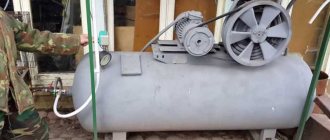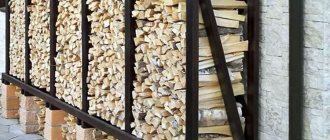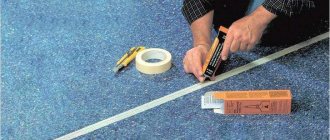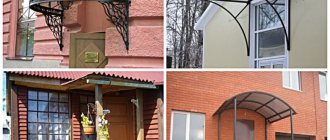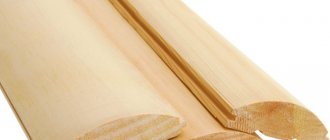If you plan to raise livestock of any kind, then first of all you should build a barn. A DIY animal shed must meet important requirements, which will be discussed in this article. After reading it, you will know how to build not only a barn for chickens with your own hands, but also for other pets.
Windows are required
After the cow barn is built, it is equipped with all the necessary equipment for the proper maintenance of animals. For each individual, you can make a separate stall using boards or metal pipes.
For proper fattening, you need to properly equip feeders and drinkers. Animals must have free access to food. Feed containers can also be made from wood. The surface must be hewn so that it becomes smooth and the cattle are not injured.
Feeders made of synthetic materials are also quite good. They are convenient to wash and disinfect. It is not advisable to place all food and drink containers on the floor. It is best to fix them at a height of 7-10 cm.
Shed layout
Before planning begins, it is worth deciding on the type of livestock and studying the standards for its maintenance. The area of the barn for animals is calculated by the number of heads, for example, a cow requires 18 sq.m. Having found out the necessary information, you can proceed to the preparation of the relevant documents. At the stage of creating a plan, you need to think about where to store food in the barn, where to place equipment for care and reproduction.
Some builders choose a layout without an attic to save money, but professionals say the opposite. During the frosty season, the attic space serves as an obstacle to the penetration of cold air. In addition, it can become a place to store grain and hay.
Dimensions
When building a barn, you should focus on the number of heads. An adult animal requires 6 sq.m., with a cub - 10 sq.m. The width of the stall is 1.1 m, the length is 1.7 m, and the passage distance between them is no more than 1.5 m. The minimum building height is 2.5 m.
Shed for birds and small animals
The size of the barn for animals and poultry depends on the number of heads. For 1 sq.m. 4-5 chickens or 2 turkeys are accommodated, a duck or goose requires 2 sq.m., a rabbit is placed in one cage measuring 115x65x60 cm, and goats require 4 sq.m. free space per individual.
The building for birds differs only in the size of the nest and perch. Turkeys love warmth, so the room should be insulated in order to receive products even in cold weather.
In order for chickens to lay eggs all year round, it is necessary to provide high-quality feeding, positive temperatures during the cold period and lighting.
For the foundation, it is recommended to use strip concrete, which will not allow rodents to get inside the building. Some build without using a foundation, but in this case you need to cover the base with tin. The lightweight design allows it to be only 25 cm deep.
The frame is mounted from pegs with a diameter of 10-11 cm, which are attached to the frame and laid on a foundation or buried in the ground 1 m deep in the absence of one. The outer side is finished with any material, and the inner side is insulated. On the south side there are windows and a door.
Geese, ducks, goats, mulards and chickens are housed in a similar shed with minor modifications; the rabbitry is almost no different. Perches are made for chickens and turkeys, and deep bedding is made on the floor for ducks and geese. Nests are built for turkeys and other birds, and feeders and drinking bowls are installed.
The room for goats should be dry, warm and well ventilated. The floor is made of wood, with a slight slope.
On a foundation or concrete base, the floors are raised by 20 cm. Goats prefer to lie at a height, so it is necessary to think about such a place, placing it 70 cm from the floor. For sheep, an important condition is a hard floor.
Barn for cattle and pigs
It is recommended that buildings intended for cattle and pigs be made of capital construction, since some have a lot of weight and strength. It is better to use wood, brick and blocks. It is allowed to make a frame structure and reinforce it with a strip foundation. In pig cages, additional boards are attached to the walls, since these animals chew everything. There are 5 sq.m. per individual, 6 sq.m. for rams, cows and bulls.
The cattle barn is built similarly to other buildings, the only difference being the internal part. A prerequisite is high-quality lighting and the presence of windows. It is necessary to build a sewerage system. To do this, a 30 cm wide gutter is installed. The cattle stall should have a width of 1.1 m, and the feeder should be installed near the windows.
It is recommended to keep piglets in different rooms in winter and summer. The winter shed should be well insulated, but it does not require a large number of windows, low height, but with convenient access.
It is better to make the floors concrete. For relaxation, build wooden beds and place them at a low height from the floor.
What is the best system for keeping cows?
There are three main types of cow housing:
- stall-pasture;
- stall-walking;
- tethered;
Let's consider their pros and cons of each of the named types.
Stall-pasture
For farms, stall-pasture keeping of animals is most justified. It corresponds to the physiology of cows, since it maintains natural resistance to various infections, parasites, pollution and reproductive functions. Cattle have sufficient exercise and are fed with complete grassy feed. While grazing on pasture, cattle's health improves and productivity increases. While the barn is free, it is easier to make repairs and disinfect.
The stall-pasture system requires large pastures
Stall-walking
This option is recommended for those farms where there is a fairly large number of livestock per unit area. Advantages:
- a smaller area is required;
- the development is more compact;
- the length of communications is shorter.
Flaws:
- irregular exercise;
- maintenance technique;
- feeding and hygiene standards are violated.
The stall-walking method is fraught with a decrease in herd reproduction
Pyvyaznoe
This kind of maintenance is practiced at large industrial complexes. It allows you to differentiate between feeding and caring for livestock, but labor costs are significantly higher. In addition, there is no exercise. But it is much easier for service personnel, veterinarians and zoo specialists to inspect and care for each individual individually. Tethered pens are placed in multiple rows, combining two rows of stalls with one manure and feed aisle.
Tethered housing allows you to keep the health of cows under control, but is costly
Building dimensions
Building a large barn is quite expensive, but even a novice farmer can build a barn for bulls and cows. The room should not be too cramped, but not too spacious. For an adult, 6 square meters is enough. m. If she is kept there with a calf, then the area needs to be increased to 10 square meters. m. Animals will be comfortable with such room sizes.
The areas for each cow are separated by partitions that form stalls. In it, the animal should be with its face to the feeder and its back to the liquid collector. Accordingly, the floor must be built with a slope of 2-3% so that waste products flow into this manure chute. It is laid in the back of the stall. The slurry container can be 10 cm deep and 20 cm wide. If it is planned to keep cattle on litter, then a waste collection system is not installed.
A standard stall should be up to 260 cm in length and 125 cm in width. These dimensions may vary depending on the type and size of the animal. If it is not too large, then 170 cm in length is usually enough.
When stalls in a barn are located along the walls in two rows, there should be a passage between them from 120 cm to 150 cm. The ceiling height is not important, but at least 250 cm is recommended.
The principle of building sheds, the choice of materials
The first step is to decide on the location of the construction of the structure, its size, height and materials for construction. From various sources (books, the Internet, from neighbors who have a shed) you can find many standard construction plans with certain types of parameters. For one adult cow, 18 m2 will be enough. If you want to keep a cow and a calf together, then the area needs to be increased by 6–9 m2. This footage includes space for feeders and a passage.
Typically, a livestock barn is located at the rear of the house. If the site allows, it can be placed separately from the living space. We must not forget about the requirements for sanitary standards: the distance from the barn to the well must be at least 20 meters, from a residential building at least 15 meters. One cow needs a minimum of six square meters. This means that the volume of the structure depends on the number of cows that will be kept in it. You also need to take into account the footage for storing feed and equipment for servicing livestock. Very often, when building a barn, the premises are made without an attic, although food (hay, grain) can be stored there. During severe frosts, the attic can serve as a barrier against the cold.
Internal additional work
In order to maintain a favorable microclimate in the insulated utility room, you will need to take care of air circulation. Animals produce a lot of moisture during their life, and humid air is a breeding ground for the development of mold and mildew. To organize air exchange, you will have to install one or two exhaust devices with a check valve into the wall at the top of the room, which prevents cold air from entering the room. Supply ventilation, as a rule, is provided by remaining leaks, a gap under the door and its periodic opening.
If possible, an insulated shed should be equipped with a vestibule with an internal door. It is convenient to store food and pet care items out of their reach. The vestibule allows you to save up to 30% of heat.
Peculiarities of Russian legislation on pets
Legal restrictions apply not only to cattle breeders, but also to those who wish to breed exotic animals without pursuing the goal of obtaining meat and other food products. There is a special list of animals whose breeding requires special buildings. Failure to comply with fire safety and sanitary standards may result in administrative liability.
A pet barn is a covered outbuilding in which it is allowed to store equipment and items for caring for livestock, but the storage of feed, manure, compost and personal equipment is prohibited.
Slaughtering will require a separate adjacent building designed specifically for this purpose.
Sheep barn
Sheep only feel safe when they are in a herd. This means that there is no need to build a separate spacious stall for each animal - the sheep will still crowd together. Sheep spend most of their time outdoors, on the pasture. In the summer, they do not need a barn even for spending the night - a simple fenced enclosure is enough. And for wintering, you can build a sheep shed with your own hands.
Features of keeping a flock of sheep
Sheep are bred primarily for their warm wool. Wool quality is the main indicator of a sheep’s health. When building a shed, you should treat it with an antiseptic to remove fungi and mold. Parasites and rodents are also not allowed in a room with sheep. The hypertrophied herd instinct of sheep does not allow them to scatter around the barn, which is very convenient for the breeder. But still, separate pens should be provided in the barn to separate pregnant or sick animals. Sheep tolerate frosts more easily than other livestock. Thick, warm wool helps them with this. Therefore, when building a sheepfold, you can save on heating and wall insulation. An important condition for keeping a flock of sheep is a hard floor surface. It is harmful for sheep to be on soft bedding, such as hay. This has a negative impact on their weak joints.
Stey for bulls
The building for keeping bull calves is practically no different from a conventional barn in design. But, since the weight of adult animals is quite large, key attention should be paid to gender.
It should be located above ground level so that during the cold season or during rains cold air and moisture do not penetrate into the room. In addition, the floor must be insulated, and it is better to build it from materials that can be conveniently cleaned of manure in the future.
Note: The floor in the bull barn should have a slight slope towards the slurry collection tank.
As a rule, plank flooring based on concrete or cement screed is used as flooring in a steer shed. This floor can withstand the weight of animals well and has a long service life.
From the video you will learn how to build and equip a barn for summer and winter housing of livestock.
Ventilation
Without it, moisture will accumulate inside the shed. It often causes the development of pathogenic bacteria. The animal body reacts sensitively to heat and cold; cows, for example, experiencing discomfort, stop giving milk.
Regular ventilation of the room helps prevent such undesirable consequences. It can be natural and forced. You can simply open windows and doors for ventilation. Ventilation shafts can be installed. During construction, you can leave open openings in the camps and then cover them with protective grilles. Open openings should be on the same side as the windows.
Differences in types of roofs for a barn
When building a barn, several types of roofs are used:
- with one inclined surface;
- with symmetrical side slopes and vertical ends;
- with sloping sides and a pointed or truncated top.
Regardless of the type, the roof of the barn has dimensions that exceed the dimensions of the base by 300-400 mm. The overhang ensures the drainage of flowing water from the walls of the utility block and the foundation. To fasten the finishing material, a wooden frame is used, assembled with nails or screws, and occasionally a welded or riveted sheathing made of a metal profile is used.
An excessive increase in the number of planes is undesirable, since it will not be possible to cover the roof of a barn cheaply due to the need to cut sheets of finishing material.
The choice of roof configuration is left to the owner of the house, who is guided by the price of finishing and the size of the utility unit. The type of material is determined depending on the financial capabilities of the person and the design of the main buildings. For example, you can cover the surface with flexible or metal tiles or sheathe it with a metal sheet, and the roof of a shed made of corrugated sheets has a reduced cost and can last up to 25-30 years without repair.
We recommend: Flexible tiles - how to lay them yourself?
Shed roof
The basic type of roof for a shed is a flat surface, angled between 0° and 45°. The flat side wall and end parts are installed vertically; boards or panels made of pressed sawdust are used to make the planes. Natural wood is impregnated with substances that prevent the material from rotting or being attacked by pests; the panels are treated during the manufacturing process and do not require additional protection.
Shed roofs are usually divided into categories:
- Flat type (angle up to 3°), roll or bitumen materials or molded metal sheets (seam roofing) are used for covering.
- With a small angle of inclination (up to 30°), which can be covered with all types of roofing materials.
- With an increased slope (more than 30°), allowing the installation of any roofing material.
Advantages:
- ease of construction and subsequent maintenance;
- low weight of rafters and sheathing, reducing the load on the walls of the barn;
- the possibility of using a ramp to install additional equipment (for example, a water tank that is heated by the sun’s rays);
- versatility of the scheme, the plane can be covered with any material.
Flaws:
- reduced volume or absence of an attic (the parameter depends on the installation angle of the slope);
- increased wind load on roofs with an increased angle of inclination;
- accumulating snow can break through the rafters and destroy the building (for roofs with a small or zero installation angle);
- at a small angle of inclination, moisture accumulates in the niche under the roof;
- the absence of an attic space makes it difficult to install the insulation layer.
Gable
For permanent buildings, a roof with 2 symmetrical slopes is used, which are connected along the upper plane at an angle. The design allows you to decorate the attic space, but the increased weight of the rafters and finishing should be taken into account. In addition, if you plan to store vegetables or tools under the roof, then the ceiling of the barn must withstand additional load. The planes located at an angle ensure the removal of melt water and snow, but the increased area leads to an increase in the wind load on the rafters and roof.
An additional advantage of gable roofs is increased resistance to fire. Impregnation of wooden structures with a special composition slows down the spread of fire, and rafters with an increased cross-section can withstand external temperature influences for 15-20 minutes (enough time to extinguish a fire in a timely manner).
The attic space allows the installation of thermal insulation sheets; the barn can be used in winter as storage for vegetables or as a workshop room.
Raznoskatnaya
A pitched roof is a type of single-pitched sections that are located at different levels. The scheme is used for outbuildings adjacent to the walls of a residential or country house. The asymmetrical roof has a stylish appearance and allows the additional building to harmoniously fit into the structure of the main building. The roof can withstand gusts of wind and does not collapse under the weight of snow, which slides off the inclined plane under its own weight.
Some site owners use the technology of constructing a pyramidal roof with a sharp or truncated top for barns and houses. A classic hip roof is built on the basis of a rafter frame, which provides increased structural rigidity. Additional edges reduce the load from snow; the elimination of vertical walls allows the use of any materials for insulation.
A series of photos shows possible options for hipped and multifaceted roofs for residential buildings and barns.
General requirements for a barn
When planning the construction of premises for keeping livestock, you need to take into account several factors at the same time:
- animal comfort;
- comfort of the serving person;
- adequate conditions for regular livestock cleaning;
- simplicity of the barn design;
- use of inexpensive building materials.
The ideal livestock barn meets all of these requirements.
Location of the livestock barn on the site
You need to choose a place to build a barn for livestock with your own hands, taking into account the location of other buildings on the site. First of all, you should protect your home and vacation spots from such a “fragrant” neighborhood. Try to place the shed at a distance of 15-20 meters from a residential building. This will be enough to avoid the smell of manure.
Another fundamentally important condition is that the cattle barn must be located away from wells and water wells. This is due to the fact that animal waste products not only smell bad, but are also sources of infections and parasites
If this rule is not followed, the water in the well may become unfit for consumption.
If you plan to use manure to fertilize your garden, build a pen near your garden beds. Animals that will regularly leave their barn to graze must have an unobstructed path to exit. Otherwise, your flower beds, vegetables or lawn risk being trampled and eaten.
Suitable building materials
In principle, you can build a barn for livestock with your own hands from anything. The main building material from which walls are built is used:
For small sheds on a personal plot, wood is most often used. It is warm enough, easy to work with, and such a building costs an order of magnitude cheaper. But, if we are talking about a spacious room for a large number of livestock, it is better to use other materials. A permanent shed made of cinder block or brick is much stronger and more durable. Interior decoration consists of installing an insulated floor so that animals that sleep on the floor do not freeze or get sick. The walls and ceiling should be treated with an antiseptic or at least lime to protect against fungus and insects.
How to position the shed correctly?
Despite the fact that an animal shed is a simple building, when choosing a location you should follow some rules:
- location at a distance of at least 12 m from residential buildings and at least 20 m from the well;
- notifying neighbors about upcoming construction to avoid conflicts and misunderstandings;
- choosing a location on a hill to prevent flooding of the barn during the rainy season;
- The location of the shed windows is on the south side.
Regardless of whether the barn is installed for cows or chickens, it must provide comfortable living for the latter.
When designing, you need to consider how much space the animals require. According to modern rules, each variety should be located separately from each other. Particular attention should be paid to the choice of design and building materials.
The site of future construction should have a walking area where animals can go out at any time. This area must be fenced off so that pets cannot go into the garden.
How to insulate a poultry house?
A poultry barn is usually built without capital construction and without heating. But the temperature inside should be quite high even in winter cold. This is achieved through additional insulation. First of all, all cracks in the walls are carefully removed: drafts are the most common cause of heat loss.
For the winter, window frames are sealed with a sealant or usually with plastic film on a sealant. Doorways are also carefully insulated. A layer of straw, hay or large wood shavings is placed on the floor (thin sawdust is not suitable). Ceilings can be insulated for the season with foam plastic or film.
But it is better to treat plank walls at once during construction. They can be insulated with different materials. One of the most economical and simplest is the “old-fashioned method” - shingle shingles on a sheathing. This is an environmentally friendly material that is not harmful to poultry and creates an optimal microclimate in the room. Installing shingles is easy, it does not last very long, but it can be easily replaced with a new one without high costs.
The floor in the poultry house is insulated with hay or sawdust
Guide to installing shingles on walls
Step 1
Thin slats are used for the frame, which can be purchased at any building materials store.
Buy thin slats
Step 2
Thin slats are nailed from the inside to the walls of the barn in a diagonal order.
How to tie a cow in a stall?
The cow is kept on a leash if it is necessary to stay in the stall for a long time.
The animal can be tied to a fence or wall using a strong but soft rope or chain about 150 cm long - this will allow the cow to freely move down/up and reach the feeder.
One end of the chain is attached to a ring driven into the wall or attached to the feeder, and the other end is attached to the collar.
There should be about a meter of free chain left. Bulls need a shorter chain to keep their muzzle near the feeder.
What materials and tools to use
For homely premises, leftover building materials that have been in stock for a long time and are waiting in the wings are suitable. You can buy the missing parts and it will be inexpensive. You will also need the most standard tools, which are usually found on any farm: saws, hammers, nail pullers, containers for mixing mortars, brushes and rollers for painting, tape measure and slopes for measurements, etc.
Most often, sheds for domestic animals are made of wood or brick/cinder blocks. Lightweight frame-and-plank structures are an excellent option for midday regions where severe frosts do not occur. You can use this type of building in the middle zone, but then you will need to provide insulation. For areas with a more severe climate, permanent sheds made of brick and similar materials are optimal.
Wooden structures are erected more quickly, but do not last as long as stone-brick ones. A wooden shed must be well strengthened, the walls must be primed and painted. It can be insulated from the outside and inside using a suspended profile, shingles, etc. Capital buildings for animals are erected on a columnar foundation, for which it is easiest to use gas-foam concrete blocks, held together not with concrete, but with a special construction adhesive.
We recommend: which is better, vinyl or metal siding for cladding a house?
Frame barn
What to build from
The issue of the building materials used has already been partially raised. In fact, this structure can be built from a variety of building materials, for example, wood, brick, cinder block, corrugated board, slab, etc.
If the barn is small, then wood will do; if it is large, then you will have to build a massive structure made of bricks or blocks.
Arrangement of the barn and hygiene of the premises
First of all, you need to provide lighting and fresh air. The optimal temperature for keeping cows is 8–10 C°. Permissible temperature fluctuations are from 4 to 20 C°. The animal must not be allowed to overheat. At a comfortable temperature, metabolic processes in the body do not waste energy on heating the body, thereby increasing the weight gain and milk yield of cows. You also need to organize the correct supply of fresh air. It is not recommended to allow drafts in the room, as they cause many diseases. The ventilation corridor is constructed from boards with a cross-section of 15x15 cm and is brought above the ridge to the roof. It must have a damper that will protect from bad weather and precipitation in the form of snow.
To keep the barn dry and comfortable, you need to provide bedding. It keeps the cow warmer. This material absorbs moisture, thereby making the room drier. If you don't want to clean the shed every day, you can gradually add bedding, which over time will make a kind of pillow. In winter, it will be warmer for the cow to rest on it.
Equipment in the shed includes:
- Feeders for hay, straw and liquid feed. They should be quite voluminous, convenient for feeding and cleaning. The best solution is to install them in front of the stall. Dimensions for one cow: front wall with a cutout for the neck 35–40 cm, back wall 70–80 cm (so that feed does not fall out), length no less than 1.2 meters. Tray for lick (salt). The animal’s body requires replenishment of minerals; in winter, their deficiency is compensated for with salt.
- Drinking bowl. It should be equipped so that the water does not overflow and is not contaminated with waste. Technologies have stepped forward, so automatic drinking bowls are installed in modern barns. They can be connected to the central water supply; if there is no access to it, then to the water tank. The automatic drinking bowl makes your work easier; you don’t need to carry and store water in buckets.
- If there are several cows of different ages in a barn, then a dividing grid is needed so that the animals cannot injure each other.
- Calf pen.
- Door. Many people make a grave mistake when they install several entrances to a room, usually through ones. When opening such doors, a draft is created, which has a detrimental effect on the health of animals. Therefore, we recommend stopping at one entrance to the barn. To further insulate the room, you can make double doors. There will be an air cushion between them that will not let cold air into the barn.
From time to time, the barn needs to be disinfected. Liquid feed and waste are a favorable environment for the development of pathogenic microflora. The walls of the barn should be disinfected with a lime solution twice a year (in spring and autumn). Treat feeders for liquid food with lye. It is also necessary to ventilate the room every day in any weather. Drinkers and service equipment must be cleaned as necessary. We should not forget about blowing out the ventilation ducts. Otherwise, they may become clogged and stop performing their intended function.
In a subsidiary farm, a barn for livestock is an integral part. Everything necessary for keeping cattle is located here - equipment, ventilation, windows. In this case, the structure must be located in the right place. Construction materials also play an important role. Comfortable living will provide the livestock with good health, good weight gain, and high milk yields. The article discusses the rules for building a building with your own hands, taking into account the basic requirements for keeping animals.
Important stages of construction
When drawing up a barn construction project, it is worth considering that the size of the pets will change. Therefore, materials that can be reduced or increased are used for the stall. Particular attention should be paid to ventilation, water supply, sewerage and electricity.
Before starting work, it is necessary to determine the dimensions of the future room in accordance with the standards. Construction begins with the construction of a foundation, the shape of which depends on the materials of the walls. With a frame made of timber, a strip foundation is used. Before the construction of walls begins, a layer of waterproofing is laid and the floor is laid out. Only then should you proceed to the main stage of work. An inexpensive option is to build from blocks, and it also requires additional insulation.
The final stage consists of the equipment for the shed. This is the installation of voluminous and convenient feeders, placement of drinking bowls. It should be installed so that water does not splash and become dirty. Some install automatic drinkers that connect to the central water supply.
Base
The flooring in the room depends on the type of animal and use in winter. In this case, it is necessary to take care of a warm floor and a high-quality foundation, the type of which depends on the material of the walls. The weight of the animals plays a big role, for example, rabbits will not be a big burden, unlike cattle. In this case, you can build floors from wood, since rabbits live mainly in cages. When building a wooden shed, a columnar foundation is suitable.
Roof
The roof is made with a slight slope. It can be single or double slope. In the second case, the presence of an attic is assumed. It retains heat and serves as a place to store food. In areas where winter lasts a long time, gable roofs reduce the load on the floor, which increases the service life. In the southern regions, the building is often covered with polycarbonate, thereby creating additional light.
Walls
Various materials are used in the construction of walls:
- croaker;
- corrugated sheeting;
- sleepers;
- brick;
- foam block and much more.
Aerated concrete blocks have high thermal insulation characteristics, so walls made from them do not require additional insulation. This material is inexpensive and lightweight, making it easy to transport. But when shrinking, the walls made of blocks can crack, and the rough base does not hold various fasteners well. In this regard, construction becomes more complicated and requires additional costs.
Foam blocks are inexpensive and can be used to build a room in a short period of time. They retain heat well and do not cool the barn even in the coldest month. But their assembly requires special glue. A barn for livestock can be built from any material, based on your own preferences and experience.
If you use limestone slabs in your work, you will need to lay insulation between the wall and the foundation, sand the surface, and also ensure that moisture does not accumulate. When installing slabs, it is prohibited to use metal brackets. The positive side of limestone walls is the antiseptic property of the surface, which has a good effect in the prevention of various pathologies. They have a plastic structure that quickly erodes. Following technology, such a building will last a long time.
The best option in terms of cost is walls made of adobe, but they are allowed to be built only in warm periods. They retain heat and coolness, absorb excess moisture, and evaporate it in hot weather. Thanks to this moisture exchange, a favorable microclimate for animals is maintained.
The peculiarity of using such walls is the creation of a high foundation and plastering of surfaces on all sides. Gradually, the adobe shrinks, and cracks form on the walls.
Using a frame-type system, walls made of 3-layer panels are mounted. It is recommended to use products that contain polystyrene foam and mineral wool. Often panels are used when it is necessary to build a room and then move or dismantle it.
Such a room will be a comfortable place for livestock to live. The outer side is lined with various materials.
Window
Just like walls, windows are constructed from various materials. The size of the opening is calculated in the ratio of 1x10 to the size of the room. The windows are located at a height of 1.2 m from the base. To prevent drafts, it is recommended to install them only on 1 side. The structures can be made sliding or lifting. The latter are suitable for pens where milking takes place. For sheds intended for breeding young animals, windows are installed that swing open. Polycarbonate is often used instead of glass.
Barn floor
To protect livestock from diseases, it is necessary to build a warm and durable floor with a slight slope. It is important to keep it dry. The slope must be made at the rate of 1.8-2.5 cm per square meter. If you install more, the animals will constantly have to strain their legs, which will subsequently affect the joints.
For strength, it is recommended to fill the base of the floor with concrete mortar. The latter does not absorb odors, does not get wet and protects against rodents. The only drawback is the cold material, which will make the cattle freeze in winter. To solve the problem, use wooden boards or straw bedding. When using shields, they will have to be changed periodically, since the wood is saturated with odors and moisture.
Doors
Most people make the mistake of placing doors on opposite sides. This creates drafts that will quickly affect the health of livestock. Professionals advise installing only 1 entrance door. To keep warm, a vestibule is made. Thanks to the air gap, the cold does not penetrate into the room.
Lighting and communications
Only the windows do not create the necessary lighting in the barn. According to statistics, artificially increasing daylight hours increases the amount of milk production by 10%. It is necessary to make high-quality wiring in the room, adhering to fire safety rules. With its help, you can connect the necessary electrical appliances in the dark.
To facilitate caring for livestock, it is necessary to install gas and water. Some install separate boiler rooms that heat the room.
Ventilation
Without ventilation, moisture will accumulate in the shed, which will lead to the growth of bacteria. Many animals react particularly to heat and cold; for example, cows stop giving milk if they are not comfortable.
Constant ventilation of the shed will help avoid such problems. It can be forced and natural. To ventilate the room, you can simply open the windows and doors.
Feeders and drinkers
Regardless of the type of livestock, the feeder and waterer are the most important equipment. They are placed at a height at which the cattle will feel comfortable eating. For example, when constructing cages and barns yourself, you need to remember that some animals may overturn the food and water bowl. Therefore, sustainability is an important condition. Periodically, this equipment needs to be disinfected.
The principle of arranging pens
Before construction begins, the location of the structure, dimensions and type of structure are determined. It is recommended to build a shed in the back of the house, and also take into account the area for walking. An adult cow occupies 18 sq.m. Based on the number of heads, the total size of the barn area is calculated.
Manure storage
Almost always this place is located next to the barn. Its size is determined based on the number of heads. For example, an adult cow produces 1 ton of manure per month.
Walking area
A barn for DIY turkeys and other livestock must have a walking area, the area of which depends on the size of the pet. There are several requirements for the walking area:
- the presence of a canopy;
- fencing;
- gates and partitions on the sides.
For newly born offspring, it is recommended to install small houses that are easy to clean and move from place to place.
Other important nuances
In terms of how to build a barn for livestock, you need to provide space for a calf. It is equipped separately from places for adults. This could be a cage or a house, in which it is much more convenient to look after the young animals. It is built from boards, approximately the height of a man. The floor in such a pen is covered with hay. There is no need for additional insulation, since it is already in the barn.
In a barn for cows, disinfection must be carried out, since all the conditions there for the proliferation of pathogenic microflora are waste and liquid feed. The walls need to be treated with lime twice a year, and feeders with wet food are washed with lye - an aqueous infusion of wood ash. All equipment is cleaned when dirty.
In a barn without a slurry container, a bedding made of straw is needed. It doesn't have to be changed every day. You can simply add fresh one, and in the process of trampling it, it will form a pillow on which the animal will be warmer in the cold season.
If you liked the article and found it useful, please like it.
Write your comments on the topic of building a barn on a farm, the nuances of its equipment and use.
Arrangement of a walking yard
A walking yard is an essential element of any farm. It allows you to walk livestock during the warm season, during the day.
The courtyard is usually built on the south side of the barn to prevent cold winds from blowing on the animals. It is advisable that the site has a canopy, a good fence and a gate.
The area is determined on the basis that one cow and heifer require 15 square meters of space, young animals - 10 square meters, calves - 5 square meters.
If the walking yard has a hard floor, then 2 square meters of territory are needed for one calf, 5 square meters for young animals, and 8 square meters for cows and heifers.
Considering that animals spend 4–6 hours walking in the yard in winter, and 12–14 hours in summer, then they should have access to food and water. To do this, feeders and drinking bowls are placed on the site.
Preparatory activities
Having gone through the stage of designing a barn and having all the necessary drawings/diagrams in hand, you can proceed to the preparatory work. Don't think that this step is less important. They cannot be neglected. If you start construction work right away, the lack of preparation will lead to the fact that previously made mistakes will make themselves felt and cause a lot of problems.
At the preparatory stage you will need:
- decide how many heads will live in the future barn;
- prepare all the building materials that you plan to use in the construction of the barn;
- purchase all the necessary consumables (fasteners), and also pre-determine all methods of fastening the main structural elements;
- study of the area allocated for future construction work.
Preparing a site for a barn is one of the most important preparatory stages. It must be taken into account that the site for such a structure must be perfectly level. Experts strongly recommend preparing barns in which cows will be protected from the wind (regardless of the number of heads - there can be 5, 10, 50, or 100). That is why you should not build barns in places where the winds blow especially strongly.
Start of construction
The project must reflect the construction concept and the final result as accurately as possible. Before starting all work, it is necessary to determine the location, taking into account a possible increase in the number of livestock. Some additional buildings for calves may also be needed, depending on which animals will predominate - meat or dairy.
The order of work is as follows:
- the foundation is laid;
- lays and arranges the floor;
- the walls of the barn are being erected;
- floors and roof are being built;
- The barn is equipped with everything necessary.
First, you need to mark the boundaries of the territory where you need to build a barn for cows on a household plot. Ropes and pegs will help in this matter for more even digging of the trench under the foundation.
Cow barn
If you plan to keep only one or two cows and calves on your homestead, you can build a barn from any available material: foam blocks, bricks, cinder blocks, shell rock or wood. A wooden barn is considered the least suitable option, since a lot of time and money need to be spent on its construction, and the structure itself will not have a long service life.
Figure 7. Scheme of construction and insulation of a barn. As in the case of a room for keeping bulls, the floor is made above ground level, and for insulation, the floor covering, walls and ceiling are sheathed with thermal insulation material. The inside of the barn walls should be whitewashed with lime to prevent the spread of fungi and mold.
Construction stages
First of all, we start marking the boundaries of the future barn. To do this you need to stock up on rope and pegs. Strictly according to our markings, we dig trenches to fill the foundation. In the dug holes it is necessary to make a cushion of crushed stone and sand. As a rule, small stones, broken bricks, cement and water are used for the concrete mixture. The solution should be “thick sour cream.” To prevent such a batch from spreading in the dug trench, we make formwork from wooden boards. Now we can safely pour the solution. After pouring the foundation, work should be stopped for several days. If you want to make a rigid base, then you can use reinforcement for strengthening. Most often, metal rods with a diameter of 8–10 mm are used for this purpose. In order for the mixture to dry properly in hot weather, it must be moistened with water. We also recommend covering the entire perimeter with roofing felt.
Sheds for livestock must be warm, so the material for construction must be taken responsibly. The choice of material also depends on climatic conditions. Builders advise making a shed with your own hands from materials such as boards or logs. But sheds built from bricks, aerated concrete and foam concrete blocks have proven themselves well. To maximize the insulation of the barn, the material you choose for the walls should be laid in two layers. We fill the space between them with insulation, it can be foam, clay, glass wool, foam rubber. The most affordable and easiest to build with your own hands is a combination of brick, glass wool and slag concrete. During the construction of walls for a shed, their evenness must be controlled using a building level. If your choice fell on foam blocks, then the construction of a structure for cows should begin from the corners. In a barn for livestock, you also need to take into account the location of the ventilation for a favorable microclimate.
We recommend: Do-it-yourself installation of metal tiles, how to lay metal tiles on the roof (video instructions and photos)
When the construction of the walls is completed, the ventilation ducts are insulated, we can begin choosing the flooring. You can make the floor yourself from concrete, which has proven itself to be durable and hygienic. Clay also holds heat well. Wooden coverings are not recommended due to impracticality. It absorbs odor, wears out quickly, and after some time it will have to be completely replaced. We begin building a floor for cows with our own hands by creating a level, the height of which from the ground should be at least 10–15 cm. You also need to take into account the slope towards the sump, which is 1–3 cm per linear meter. At the end of the slope, we build a tray with our own hands for cow waste, the dimensions of which are 10–15 cm in depth and 25–30 cm in width. With a large number of cows, it is advisable to build a chute for draining slurry (slurry collector). The gutter itself should also have a slope for easy removal of calf or cow urine. Thanks to it, the level of harmful substances accumulating in the air in the barn will decrease. The size of the gutter depends on how often you will be cleaning your shed. The minimum tank size is 1 m 3.
If you decide to build an attic, then its size depends on how much feed will be stored in it. On average, for a sufficiently voluminous haystack to fit, 2.5–3 meters in height is enough. Hay is also a good insulating material. Due to this, you can save on insulation. It is possible to make an entrance to the attic inside the barn itself, which will simplify the supply of food to the animals. The attic is made of wooden boards, fastening them together with nails.
The final stage in construction will be the installation of the roof. The material for the roof can be metal tiles, but slate will significantly reduce the cost of construction. Insulation in the form of glass wool must be laid on top of the lag. For good insulation, we cover it with boards and fasten the entire structure with nails with large heads. To ensure water drainage during bad weather, the roof is installed at a slope.
How to make a stall with your own hands?
When you have completed the drawing of a stall for cattle, you need to think about what material you will make it from. Usually wood or metal is used. The design must be strong, safe for the animal, durable and at the same time convenient for adjusting the size.
Therefore, it is advisable to give preference to metal, if possible, although it is more difficult to work with than wood.
You will need:
- metal pipes d=60 mm (their length and quantity will depend on the size of the stall, the height of the room and the design of the structure);
- concrete solution;
- pipe fastenings (ties, bolts, nuts);
- welding machine;
- timber 50x50 mm (joists for flooring, choose the length according to your size);
- board 40 mm (you select the flooring, length and width yourself);
- self-tapping screws for fixing boards;
- plane for planing boards (if not processed);
- antiseptic for wood processing;
- brush for applying antiseptic;
- ruler-level;
- roulette.
Important! Wooden flooring is needed when the floor is concrete or when it is made without a slope.
Let's assume that your barn is designed to house two cows, and each needs its own stall.
Let's consider the stages of manufacturing such a stall:
- We divide the room into two halves and draw a line in the center.
- We dig three holes along the line so that the first is near the wall, the second is at a distance of 80 cm from it, and the third is at a distance of 170 cm from the first.
- Similarly, we dig holes along the side walls.
- We insert metal pipes into the pits, which will be load-bearing, and fill them with concrete.
- The resulting nine pipes must be fastened at the top, if they do not rest against the ceiling of the room, and at the bottom. If you took pipes with a height less than the height of the barn, then it is advisable that their length be 150–160 cm. At this height it is convenient to attach a leash. Pipes must be welded.
- The side partitions can be made horizontal or as shown in the first drawing.
- Behind the space marked for the stall, it is necessary to lay a gutter 30 cm wide and 15–20 cm deep along it. Liquid waste will flow into it and solid waste will fall.
- If the floor has no slope, prepare wooden flooring. With the help of joist bars, we make a slope towards the gutter of 2–3 centimeters.
- We lay a board on top of the joists and fix it with self-tapping screws. If necessary, process with a plane.
- We cover the finished flooring with an antiseptic.
- We place a 1.5 x 0.65 m feeder in front of the stall. The height of the front side is 30 cm.
Roof construction
The roof is the final element in the construction of a barn for bulls and cows. Based on the size of the building, it can be covered with slate. If you choose from more expensive materials, then metal tiles will do. In regions with warm climates, polycarbonate has proven itself well. This material also provides additional lighting.
The roof also needs to be insulated. Glass wool, which is laid on top of the lag, is suitable for this. Water drainage can be ensured by constructing the structure on a slope.
Place for placing a barn according to sanitary standards
The productivity of the herd and its safety largely depend on the conditions of detention. If this is a damp, unventilated and cold room with drafts, then there is no talk of any return: the quality of hides and milk decreases sharply. And also, the incidence of cows increases, and feed costs increase.
Location of the farm on the ground
It is unacceptable to select a site for the construction of the facility on the sites of former livestock farms, leather and raw materials enterprises, especially cattle burial grounds. It is preferable to have an elevated, flat place with a low location of subsoil waters and having such a relief that water flows from the surface are natural. Besides:
- you need to take into account the possible increase in the farm and, accordingly, think about your land for feeding;
When planning your barn, consider the potential growth of the area.
- a farm is assigned an area located at a certain distance from water intakes for the introduction of waste products (no closer than 0.2 km to the nearest populated area). The farm itself is located no closer than 0.3 km (according to sanitary standards);
- you should consider thinking about sources of both drinking and technical water for emergency purposes;
- farms are erected on the leeward side to human habitation and on the windward side to industrial facilities. In addition, for the purpose of speedy ventilation, it is placed with its end facing the prevailing winds;
- In order to prevent various animals from entering the barn area, it is advisable to surround the barn area with a mesh fence with a height of 2 m.
Example of a mesh fence
The location for the farm must meet conditions that ensure the production of a large number of products at a minimum of costs.
Pouring the foundation
This work must be carried out especially efficiently, since the strength of the entire shed and its service life depend on this design. After the trench is dug, a cushion of crushed stone and sand is placed in it. Before pouring concrete, formwork must be made in the dug holes. By mixing the solution, bring it to the state of thick sour cream and pour it into the prepared ditches. To strengthen the foundation, you can use reinforcement with a diameter of 8-10 mm. For high-quality hardening, cover the entire perimeter with roofing material. This method is called monolithic.
If the building should not be too large and made of wood, then you can make a foundation on pillars. This design is simpler and less expensive. It resembles the first option, but the difference is that the foundation pillars are placed in a form with reinforcement, which is insulated with roofing felt. Then concrete is poured there. These pillars are installed at intervals of no more than 2 m. All work is also preceded by laying a sand cushion.
In general, the simpler the structure, the easier it is to lay the foundation. It also all depends on the composition of the soil. A suitable foundation is selected based on these parameters.
Building materials for a shed - what can be used
For a shed, materials with sufficient strength are suitable, can last a long time, are easy to work with, and inexpensive. Among the materials, boards stand out; they suit all parameters. You can build a complete barn from them. It is not necessary to use edged boards; unedged ones are cheaper. If you arrange them in a herringbone pattern, the structure will look quite beautiful. Croaker is even cheaper, but you have to remove the bark from it.
In cases with sheds, frame construction is very popular
Private developers are well aware of frame construction, although they are often unaware of this name. But it is not necessary to assemble a barn frame from timber; you can use strong boards, even used ones. Frame sheds are sometimes sheathed with plywood or OSB for the sake of beauty. It should be borne in mind that such and similar material delaminates in the open air. It needs to be primed and painted. Sometimes corrugated sheets are used as sheathing, but they need a reinforced frame.
When choosing a material, you should take into account the climate so that the temperature in the barn does not fall below -2° in winter, and above +27° in summer.
In the construction of permanent barns, especially for livestock, bricks or foam blocks are used. They are less durable than brick, but that doesn't matter here. Sheds made of foam blocks are easier and cheaper to build. In winter, living creatures are warmer in it than in a brick one, and in summer it does not heat up as much. In addition, you can save on the foundation; a lightweight building is built on a columnar foundation.
Laying begins with cement mortar - the bottom three rows, and then an adhesive mixture for aerated concrete is used. The weight of the walls is very small, the vertical load is weak, and a strong side wind can destroy the cement masonry of the upper rows, which is why glue is used. The walls on the glue will be removed gradually: first, a third of the height, waiting for it to set, then another third, again allowing to stand.
Sources
- https://kupi-krasku.ru/otdelka/saraj-dlya-krs.html
- https://fazendahacks.ru/kak-samostoyatelno-postroit-i-pokryt-kryshu-saraya
- https://polemo.ru/carai-dlya-zhivotnyh-i-ptitsy-plan-postrojki.html
- https://obustroen.ru/pomescheniya/dlya-ghivotnyh/sarai-dlya-zhivotnyx-i-pticy.html
[collapse]
Post Views: 275
